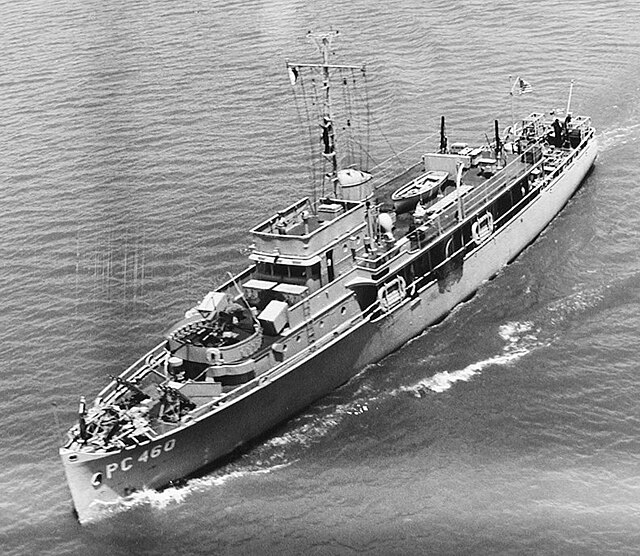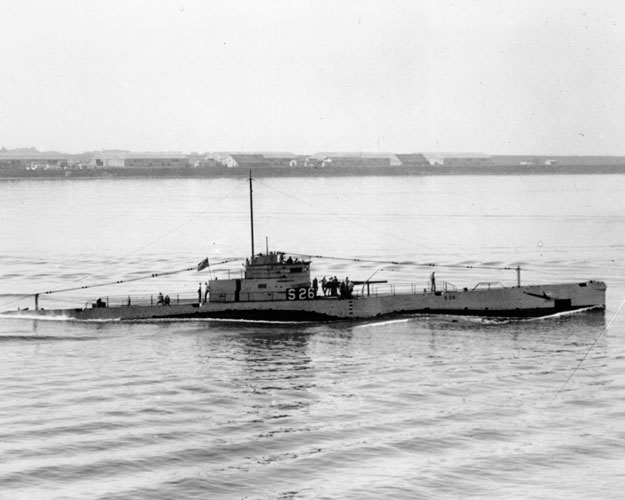On January 24, a somber assembly of sailors from the Alaska Naval Militia and US Navy Reserve convened at the US Navy Reserve Center on Joint Base Elmendorf-Richardson to honor their fallen friends who died 82 years ago when the S-26 submarine met a tragic fate.
The loss of the US Navy’s S-class submarine S-26 (SS 131) in the Gulf of Panama on January 24, 1942, marked an excruciating chapter in the history of the US Navy’s submarine fleet.
As he welcomed visitors to the event, Capt. (AK) Jason Woodward, commander of the Alaska Naval Militia, set a respectful and reflective tone by stating, “Since the establishment of our Navy’s submarine service, 65 submarines have been lost in service.” “We still have over 4,000 shipmates who are “On Eternal Patrol.”
The memorial featured a moving Two Bell Ceremony, a custom that originated in early naval history when the ship’s bell indicated changes in the daily schedule on board. Over time, this practice developed into a solemn ritual to remember fallen crew members.
Chief of Staff of the Alaska Naval Militia, Lt. Cmdr. (AK), explained, “The toll of the ship’s bell reminds us of the reverence we owe to our departed shipmates.” A flag-raising ceremony was also conducted after the last bell rang and Taps was played.
“Throughout my naval career, there’s always been traditions and transitions, and this is an opportunity to remember the people that we [are] standing on their shoulders,” said Allen. “They made us what we are today, and they had to watch before us.”
The S-class submarines were the first series built primarily to US Navy specifications. They were present in every theater of operations and comprised most USN submarine fleet throughout the interwar period (the interlude between the two world wars).

Although they weren’t called “Fleet Submarines” in the conventional sense, they were the first USN submarines built for open ocean, blue water missions. The purpose of every submarine built before was to defend harbors or coastlines.
However, the S-class of submarines, including the S-26, were built to outperform earlier classes in terms of speed and range, enhanced habitability, and increased weaponry. The keel of S-26 was laid in Massachusetts on November 7, 1919, and was put into service on October 15, 1923.
Following the Japanese attack on Pearl Harbor on December 7, 1941, which brought the United States into World War II, S-26 left New London on December 10, 1941. It reached Coco Solo, Panama, on December 19, 1941. Later, it launched its first war patrol off the coast of Panama in the Pacific Ocean but came across no enemy combatants.
However, despite never encountering an enemy, the vessel went down after a collision that nobody may have anticipated. Although the tragic incident took place on the evening of January 24, 1942, the American public did not learn about it until February 7 of that year.
This must have been an extremely disheartening report, given the sheer number of negative news stories the American people were receiving worldwide. EurAsian Times dives back into history to find out what went down on the fateful day when the S-26 sunk, making it one of the worst tragedies to have hit the US submarine fleet.
What Led To The Sinking Of The S-26?
Under the escort of the submarine chaser PC-460, later renamed USS Sturdy, S-26 departed the harbor at Balboa, Panama, on the night of January 24, 1942, to begin her second war patrol as part of a division that also included the submarines USS S-21 (SS-126), USS S-29 (SS-134), and USS S-44 (SS-155).
To lessen the possibility of being discovered by hostile forces, all five submarines—PC-460 cruising 1,500 yards or 1,370 meters ahead of S-21, the lead submarine—were on the surface.

Following the vessels’ arrival in the Gulf of Panama, at 22:10, PC-460 signaled to the submarines that they could continue with their assigned tasks and that she planned to perform a broad 180-degree turn to starboard to return to port. However, somehow, this communication was only received by S-21.
Following the turn, PC-460 came into contact with S-26, trailing S-21 by 2,000 yards or 1,830 meters. The two vessels came in close sight of one another, realizing the dangers that they had run into. The PC-460 took immediate action and ran her engines at full speed. However, as destiny would have it, the engines failed.
At 22:23, PC-460 rammed S-26 on her starboard side after both ships attempted to avoid a collision, but it was too late. Three of the four sailors on her bridge were thrown overboard as the impact tore a massive hole in the S-26’s side and caused her to roll.

In less than a minute, the S-26 sank by the bow in 300 feet or 91 meters of water, approximately 14 nautical miles west of San Jose Light.
The three men who fell overboard from S-26’s bridge—her commanding officer, executive officer, and lookout—were the only ones who survived. Forty-three crewmen, including one who had also been on the bridge, and three officers made up the remainder of her crew that perished.
The morning of January 25, 1942, saw the start of rescue operations. Over the next few days, divers made 25 dives to the wreck, hoping to discover individuals who might still be alive inside the hull of the S-26, but they came up empty-handed.
According to a message found on a buoy that had been ejected from a signal gun and found itself on the surface, the crew members who were still alive were in the central operating compartment of the submarine. In contrast, the forward and after ends, which housed the compartments equipped for rescue operations with the diving bell, were flooded.
It was impossible to use the submarine rescue bell over the center compartment, even if the ship had been detected in time, the Navy revealed, due to the design of the conning tower construction in this type of submarine.
According to the Navy, the submarine was operating on the surface when the collision led to its sinking. As those with knowledge of submarine operations have noted, a submarine is far more susceptible to a crash when it is in surface condition than when it is prepared for submersion.
After an extensive rescue mission, the submarine was located on the ocean floor. The wreckage of S-26 is a guarded war grave now. In World War II, 52 US submarines were lost, with a total of 3,506 officers and enlisted men killed
- Contact the author at sakshi.tiwari9555(at)gmail.com
- Follow EurAsian Times on Google News




